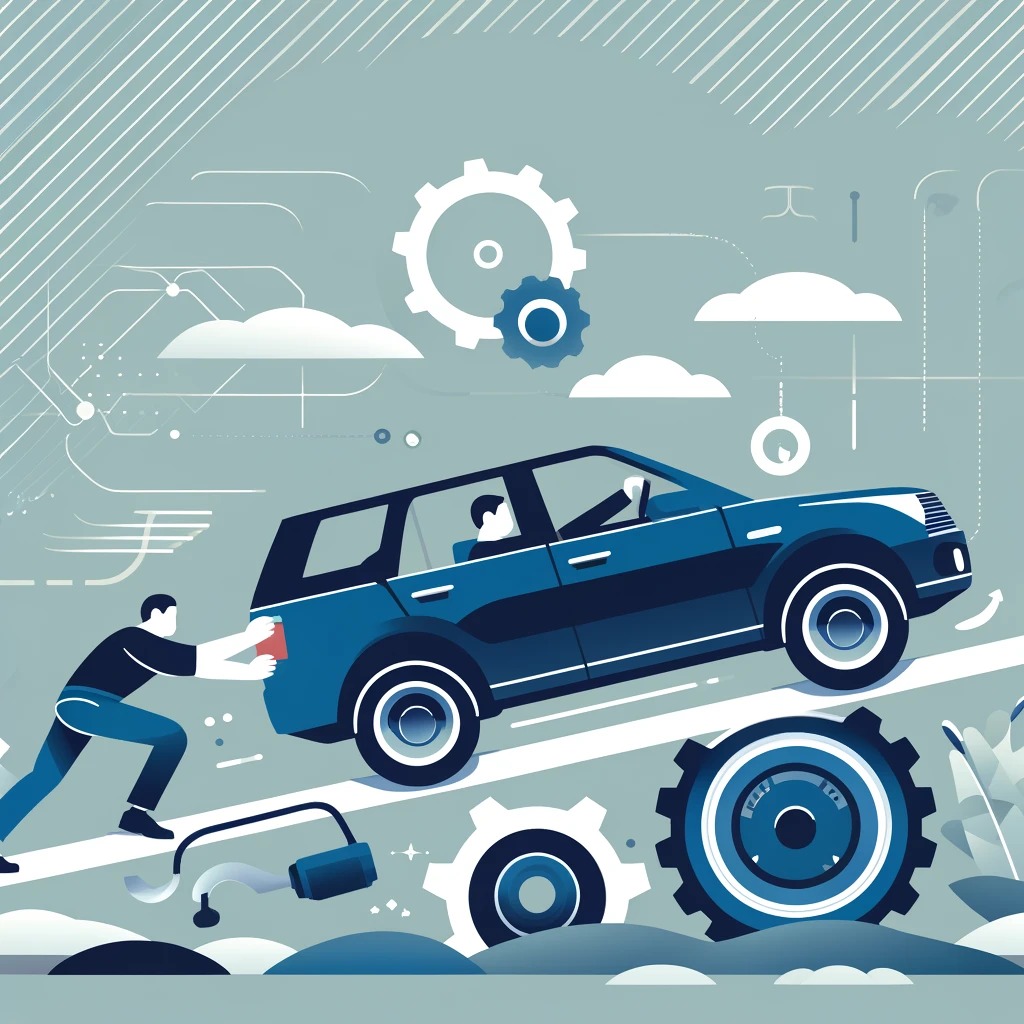Bump starting, also known as push starting, is a technique used to start a manual transmission car without the need for a fully functioning battery. This guide will walk you through the process step by step.
Introduction
Bump starting a car can be a handy technique in situations where your car battery has died, and you don’t have jumper cables or another car to help jump-start it. It involves using the car’s momentum and the manual transmission to turn the engine over and start it.
What You’ll Need
- A manual transmission car
- A safe, slight downhill slope or a few strong helpers to push the car
- Proper shoes and clothing for safety
Steps to Bump Start Your Car
Step 1: Prepare the Car
Ensure your car is in a safe location for bump starting and that there is enough space to get the car moving to about 5-10 mph. Check that the slope is not too steep to maintain control.
- Turn the ignition key to the “on” position to activate the electrical systems.
- Make sure the parking brake is fully released.
Step 2: Position the Car
If you’re using a hill, position the car facing downward. If you have helpers, have them ready to push from behind safely.
Step 3: Engage the Correct Gear
- Press the clutch pedal all the way down and shift into second gear. Second gear is generally recommended as it offers a smoother start and less stress on the engine compared to first gear.
Step 4: Start Moving
- If on a hill, let the car start to roll down naturally. If being pushed, signal your helpers to start pushing.
- Gain enough momentum to reach a moderate speed of about 5-10 mph.
Step 5: Pop the Clutch
- Once you reach the necessary speed, quickly release the clutch pedal. This action will engage the engine using the car’s momentum.
- As soon as the engine starts, immediately press the clutch pedal down again to prevent the car from stalling.
Step 6: Keep the Engine Running
- If the engine starts, let it idle and gently press the gas pedal to ensure it continues running and to help charge the battery.
- Drive the car for at least 15-20 minutes to allow the alternator to charge the battery adequately.
Safety Tips
- Be Aware of Your Surroundings: Ensure that the area is safe for this maneuver without risk to you, your helpers, or bystanders.
- Regular Maintenance: Regularly check your car’s battery and charging system to avoid frequent bump starts, which can wear out the vehicle’s mechanical components.
Frequently Asked Questions (FAQs)
Can all manual transmission cars be bump started?
Most manual transmission cars can be bump started, but it is always a good idea to check the owner’s manual for any specific recommendations or warnings against bump starting, especially for newer vehicles with complex electronic systems.
Is bump starting safe for my car?
Bump starting can be safe when done correctly and sparingly. However, it should not be a regular practice as it can put extra strain on the engine and transmission. If you find yourself needing to bump start often, it’s advisable to have your car’s battery and charging system checked.
What risks are involved in bump starting a car?
The primary risks include potential damage to the vehicle’s transmission if not done smoothly, and personal injury if the car is not controlled during the process. Always ensure the area is safe and flat enough to control the car safely.
Why is second gear recommended for bump starting?
Second gear is often recommended because it provides a smoother start and less stress on the engine and transmission compared to first gear. It allows the car to roll more easily and reduces the shock to the drivetrain when the clutch is released.
What should I do if the car doesn’t start after bump starting?
If the car doesn’t start after the first attempt, check to make sure you’re performing the steps correctly. If it still doesn’t start after multiple attempts, there may be other issues with the car, such as a more serious mechanical problem, and professional help should be sought.
Can bump starting damage my car’s electronics?
There is a risk of damaging electronic components if the car is not started correctly or if the vehicle relies heavily on electronic systems, as is the case with many modern cars. Always check your owner’s manual for guidance regarding bump starting.
Is it possible to bump start an automatic car?
No, you cannot bump start a car with an automatic transmission. Automatic cars do not have a clutch to engage the engine manually, so they must be started with a working starter motor or jump-started with jumper cables.
Conclusion
Bump starting a car with a manual transmission can be a lifesaver in emergencies. By understanding and following these steps, you can get your car started when the battery fails. However, frequent use of this technique can indicate underlying issues with your car’s electrical system, so be sure to have it checked regularly.
We invite you to check our blog for more useful articles!
